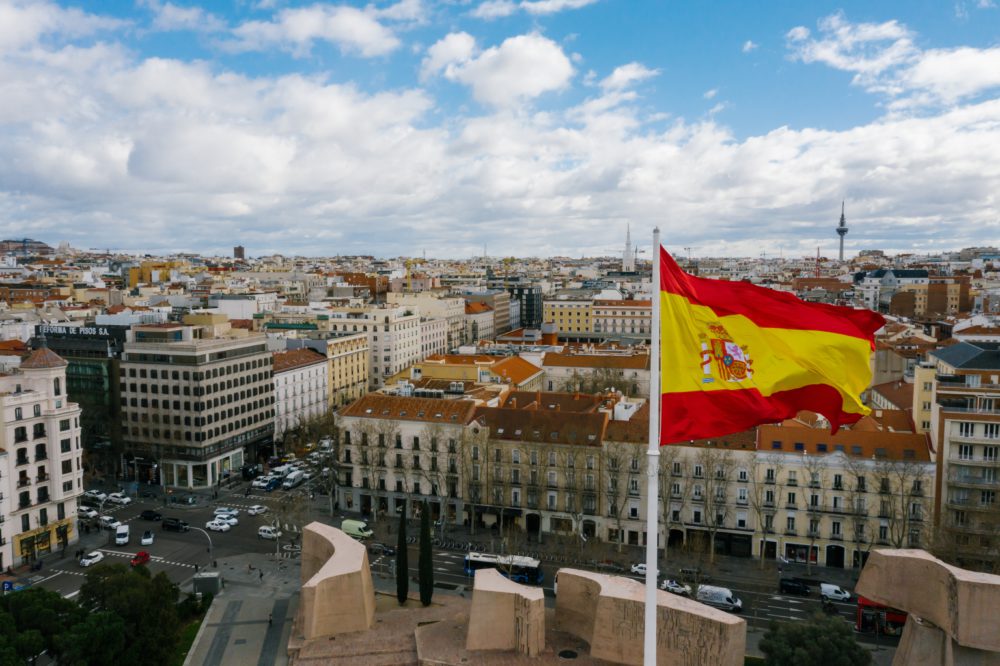There’s a few things you’ll need to know about driving in Europe on a UK licence. So, buckle up and let’s get to it.
Contents.
General information
- Green cards.
- International driving permits.
- Insurance.
- GB/UK stickers.
- Documentation.
- Food.
- Emergencies.
- Breakdowns.
- Speed limits.
- Radar detectors.
- Age requirements.
- Tolls.
- Vignettes.
- Driving in Europe kits.
France.
- What do I need?
- Crit’Air Vignettes.
- Drink drive limits.
- Covid restrictions.
- What else do I need to know?
Spain.
- What do I need?
- Drink drive limits.
- Covid restrictions.
- What else do I need to know?
Italy.
- What do I need?
- Zona a Traffico Limitatos.
- Drink drive limits.
- Covid restrictions.
- What else do I need to know?
Germany.
- What do I need?
- Drink drive limits.
- Covid restrictions.
- What else do I need to know?
General information.
Do I need a green card to drive in Europe on a UK licence?
No, not if it’s an EU country. That includes France, Belgium, The Netherlands, Spain, Portugal, Germany, Italy, Ireland and other top tourist destinations. They are also a few non-EU countries where you’re fine without a green card:
- Andorra.
- Bosnia and Herzegovina.
- Iceland.
- Liechtenstein.
- Norway.
- Serbia.
- Switzerland.
Do I need an International Driving Permit to drive in Europe on a UK licence?
No, in most cases. As long as you have a full UK licence in card form (not just paper), then you don’t need an International Driving Permit (IDP) to drive in EU countries, or any of:
- Switzerland.
- Iceland.
- Liechtenstein.
- Ireland.
If you only have a paper licence – or if your licence was issued in Gibraltar, Guernsey, Jersey or The Isle of Man – you may need an IDP for the above countries.
You may also need one for European countries outside the EU (Albania, for example). You can check if you need an International Driving Permit here.
Do I need car insurance to drive in Europe on a UK licence?
Most definitely. But don’t worry. All UK insurance provides at least third party cover (that’s just cover for damage done to other people or their property, rather than yours) in:
- The EU.
- Andorra.
- Bosnia and Herzegovina.
- Iceland.
- Liechtenstein.
- Norway.
- Serbia.
- Switzerland.
While it’s great to know you can legally drive in those places, you’d probably feel better knowing you had more than just the minimum level of cover. So check what your insurer offers. At By Miles, we offer comprehensive cover for 90 days per a policy period in:
- The EU.
- Andorra.
- Iceland.
- Liechtenstein.
- Monaco.
- Norway.
- San Marino.
- Switzerland.
You also get 90 days of minimum compulsory cover in:
- Serbia.
- Montenegro.
- Bosnia and Herzegovina.
Do I need a GB sticker to drive in Europe on a UK licence?
No. But that’s because the letters to identify British vehicles changed after Brexit. You still need a sticker, but it should read ‘UK’. If your licence plate has a union flag and the letters ‘UK’ on it already, you’re alright without the sticker.
What documentation do I need to drive in Europe on a UK licence?
No matter which country you’re visiting, you’ll want to have your:
- Licence.
- Passport.
- V5 registration documentation.
- Insurance documentation.
Can I take food into the EU?
You may have heard stories about disgruntled truckers having their cheese and ham sarnies confiscated by border patrol. That’s because, since Brexit, you can no longer take meat or dairy products into the EU. You can’t take fruit and veg either (without jumping through a lot of hoops) so vegans don’t have it any easier.
What if I have an emergency while driving in Europe?
Whichever country you’re in, if you dial 112, you’ll be put through to the emergency services for that country.
What if I break down in Europe?
Most countries have phone booths along the motorway (every 2km) that you can use to call for help. After that, call your insurance provider (or rental company if in a hire car).
What’s the speed limit in the EU?
It varies by country, but don’t worry too hard about having them memorised because – just like here – there’ll be signs to tell you. Here’s the bit you really do need to remember though. Those signs will be in km/h (kilometres per hour) not mph (miles per hour).
If you’re driving your own car, you won’t want the speedometer to match the speed on the sign. If it is, you’re going too fast. Your miles per hour should be a little under two thirds of the km/h speed limit.
Here’s a conversion guide for reference:
| Kilometres per hour | Miles per hour |
| 50 | 30 |
| 80 | 50 |
| 120 | 75 |
Are radar detectors legal in the EU?
No, in most countries they are not (and there can be big fines for having one). In some European countries, it’s even illegal to use a GPS system that alerts you to speed cameras. So check, and turn that feature off if necessary.
How old do you need to be to drive in the EU on a UK licence?
In most countries you need to be over 18 to drive as a visitor. If you’re hiring a car, rental firms normally only do business with drivers over 21.
What’s the Cross-Border Enforcement Directive?
It’s a scheme where countries share information so that visiting drivers that break the law can be prosecuted when they get home (if they aren’t dealt with at the time). Since Brexit, the UK is no longer part of the scheme. That means there’s some chance fines you get abroad may not follow you home.
Just to avoid any doubt, that doesn’t mean British drivers are allowed to speed (or break any other rules). Speeding can still result in being given hefty on the spot fines, penalty points, having your licence – or even vehicle – confiscated.
Are their toll roads in the EU?
It depends where you are. Germany, for example, doesn’t use them, but they’re very common in France, Italy and many other countries. You can usually pay for road tolls on your card.
What’s a vignette?
Some countries don’t have road tolls, but instead require you to buy a ‘vignette’ – a sticker you must display in your car. These include:
- Austria
- Bulgaria
- Czech Republic
- Hungary
- Romania
- Slovakia
- Slovenia
- Switzerland
You can usually buy them at border crossings or service stations. There are different vignettes for different time periods, so be sure to get the shortest one possible that covers your trip.
What’s a ‘Driving in Europe Kit’?
All European countries have their own rules of the road, but many require you to carry items that you may not usually have in your car. These include warning triangles, reflective jackets and first aid kits (among other things).
Shopping for all this gear isn’t too hard, though. You’ll often find larger hardware retailers selling them as bundle packs.
Okay, that’s the general stuff out of the way. Now let’s get into the requirements of some of the most popular countries you might drive to or in.
France

So you’re off to France? Lovely. But before you go bag a baguette, sit by the Seine, or ride around the riviera, you need to prepare for the roads…
What do I need to have to drive in France?
In France, the rules of the road also require you to carry certain items with you. These include:
- A breathalyser.
- A high visibility jacket.
- Spare headlight bulbs.
- Warning triangles.
If you’re driving in major cities such as Paris, you may also need a ‘Crit’Air Vignette’. Now, you’re probably thinking:
What’s a Crit’Air Vignette?
Glad you asked. It’s a sticker that goes on your car’s windshield to show how much pollution it produces.
Do I need a Crit’Air Vignette to drive in France?
To drive through a Permanent Clean Air Zone or a Temporary Clean Air Zone, you will. If you don’t, you could be fined up to £117. To drive in central Paris during the day time, your car needs a Crit’Air Vignette, and it needs to be in one of the cleanest categories:
- Green (zero emissions).
- Purple/Crit’Air 1 – (Euro 5-6 standard).
- Yellow/Crit’Air 2 – (Euro 4 standard, or diesel Euro 5-6).
- Orange/Crit’Air 3 – (Euro 2-3 standard, or diesel Euro 4).
(Wondering what ‘Euro 5-6’ means? It’s an emissions standard. Follow that link to a table explaining it all.)
What’s the drink drive limit in France?
France actually has two drink drive limits. It’s 0.2 grams per litre (0.02%) if you have three years or less driving experience. After that, it’s 0.5 grams per litre (0.05%).
That’s almost half the UK limit, so make sure you be sure not to over do it.
What side of the road do they drive on in France?
Unlike the UK, in France they drive on the right. Worryingly, a survey we did in 2019 found that most people didn’t realise that. Much better to find out in this blog than on the road.
What else do I need to know to drive in France?
Mind your music: You can be fined for excessively loud music, or for using headphones.
Eyes on the road: You can’t use a physical map while driving.
No snacks: You can’t eat while driving. So escargot is a no-go when you’re making your car go.
Car seats: Kids up to 10 must be in an appropriate car seat.
Pay attention to the weather: Aside from built-up areas, the speed limit drops by 10km/h if it’s raining. If visibility is less than 50m, the limit is 50km/h wherever you are.
Spain

Ever popular with us sun-starved Brits, Spain has a few important differences in its rules of the road.
What do I need to have to drive in Spain
You need:
- A high visibility jacket (required for walking on the road or hard shoulder).
- Headlight beam deflectors.
- A set of warning triangles.
- Spare glasses (if you use glasses to drive).
What’s the drink drive limit in Spain?
It’s 0.5 grams per litre (0.05%), which is almost half the UK limit. So if you’re driving, best keep it to a few sips of sangria.
What side of the road do they drive on in Spain?
Unlike us, they drive on the right in Spain.
What else do I need to know about driving in Spain?
Go easy on the horn: Horns are for emergency use only.
Child seats: Children under 12 or under 135cm tall have to be in a child seat appropriate for their age.
Don’t slip off your shoes (or shirt): It’s great to feel the sand between your toes, but in the car you need to wear proper footwear or risk a fine. Same goes for driving topless.
Park on the right: With some exceptions for one way streets, you always park on the right of the road.
Light it up: Leave your side lights on if parking on an unlit road at night.
Italy

Driving in Italy? It’s a pizza cake, so long as you bear the following in mind:
What do I need to have to drive in Italy?
You need:
- A high visibility jacket (required for walking on the road or hard shoulder).
- Headlight beam deflectors.
- A set of warning triangles.
What’s a ZTL (Zona a Traffico Limitato)?
Most of Italy’s bigger cities (especially ones with historic centres like Rome or Florence) have restricted zones where only residents and public transport can drive.
They’re marked with a sign that features a red circle on a white background and reads ‘Zona Traffico Limitato’. It will also give the times of say the restrictions apply (for example, 08.00 – 20.00).
Signs may not be easy to see, but even so, if you accidentally stray into one of these, it’ll cost you around €100. With that in mind, look up where the ZTL’s are (and when they apply) before you reach the city.
If you’re staying in a hotel that’s in a ZTL, you can ring ahead and have them register your car temporarily. Once that’s done, you shouldn’t be fined for driving in that ZTL. But that doesn’t mean you can enter any others. Remember, cities often have a number of different ZTL’s. Your car hire firm might offer to do this for you, but make sure to ask if they charge for that service, as you could do it yourself.
In all honesty, driving in the centre of bigger Italian cities (or any city for that matter) can be a bit of a nightmare, anyway. You’ll probably end up having a more enjoyable time if you park the car where you’re staying and get around without it once in town.
What side of the road do they drive on in Italy?
The right.
What’s the drink drive limit in Italy?
It’s 0.5 grams per litre (0.05%). As we’ve mentioned, that’s almost half the UK limit. If you’re sampling some wonderful Italian vino, let someone else handle the driving.
What else do I need to know about driving in Italy?
Mountain driving: If two cars meet on a narrow mountain road, the descending car has to reverse back to a passing point.
Park on the right: Aside from some one way streets, you always park on the right. In some areas of Rome, only permit holders can park at certain times.
Lights on in tunnels: Pop your headlights on when you enter a tunnel.
Germany

What do I need to drive in Germany?
Pack a:
- High visibility jacket.
- Headlight beam deflectors..
- Set of warning triangles
- First aid kit (this is actually only a requirement for cars registered in Germany, but someone stopping you or inspecting your car may not know that – so it could be easier just to carry one. Can’t hurt can it?
What side of the road do they drive on in Germany?
They drive on the right. (Not many countries have gone with our ‘driving on the left’ idea).
What’s the drink drive limit in Germany?
It’s 0.5 grams per litre (0.05%). As we’ve mentioned, that’s almost half the UK limit – so go easy on the pilsner.
What else do I need to know about driving in Germany?
Dress your car for the weather: Not relevant for your Summer hols, but if you’re visiting in Winter, you need Winter tyres.
Car seats: Children under 12 or 150cm need to be in an appropriate child seat.
Check your GPS: You need to turn off any functions that give you the locations of speed cameras.
Parking at night: If you’re parked on a highway at night, the car must be lit at the front and rear.
The Autobahn: Some stretches of the German motorway have no speed limit. This is indicated by a white circular line with 5 diagonal black stripes.
With our policies, you can enjoy 90 days of the same cover you get at home in any EU country – and a bunch of others. Why not grab a quote.




